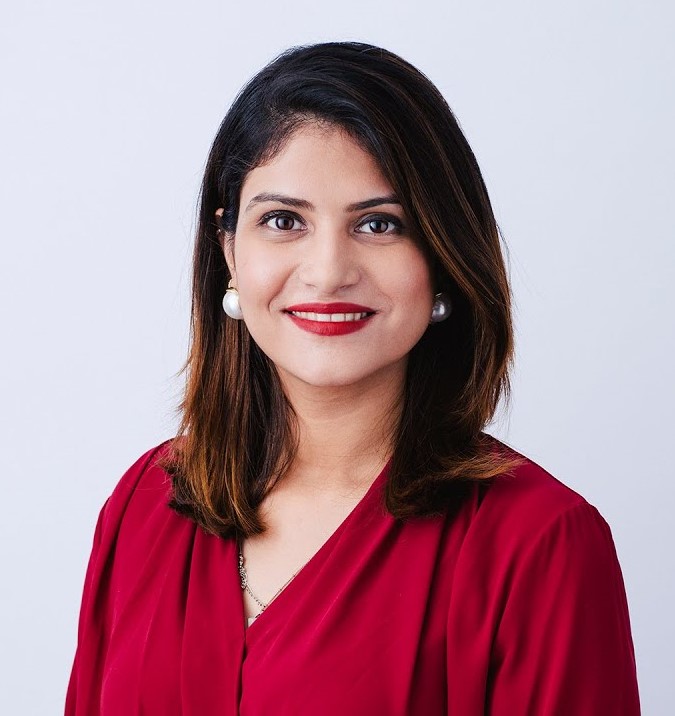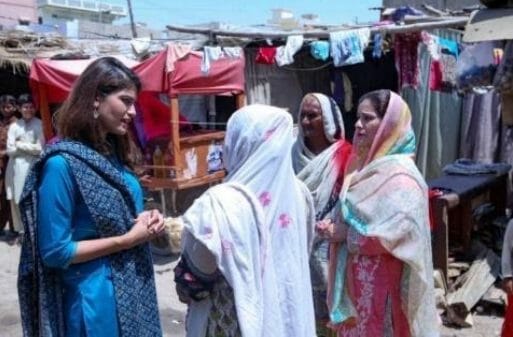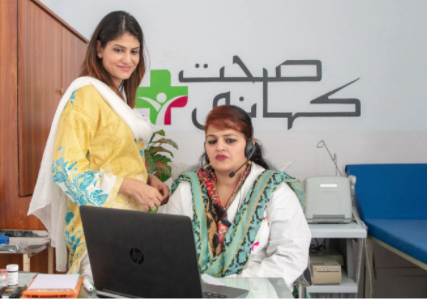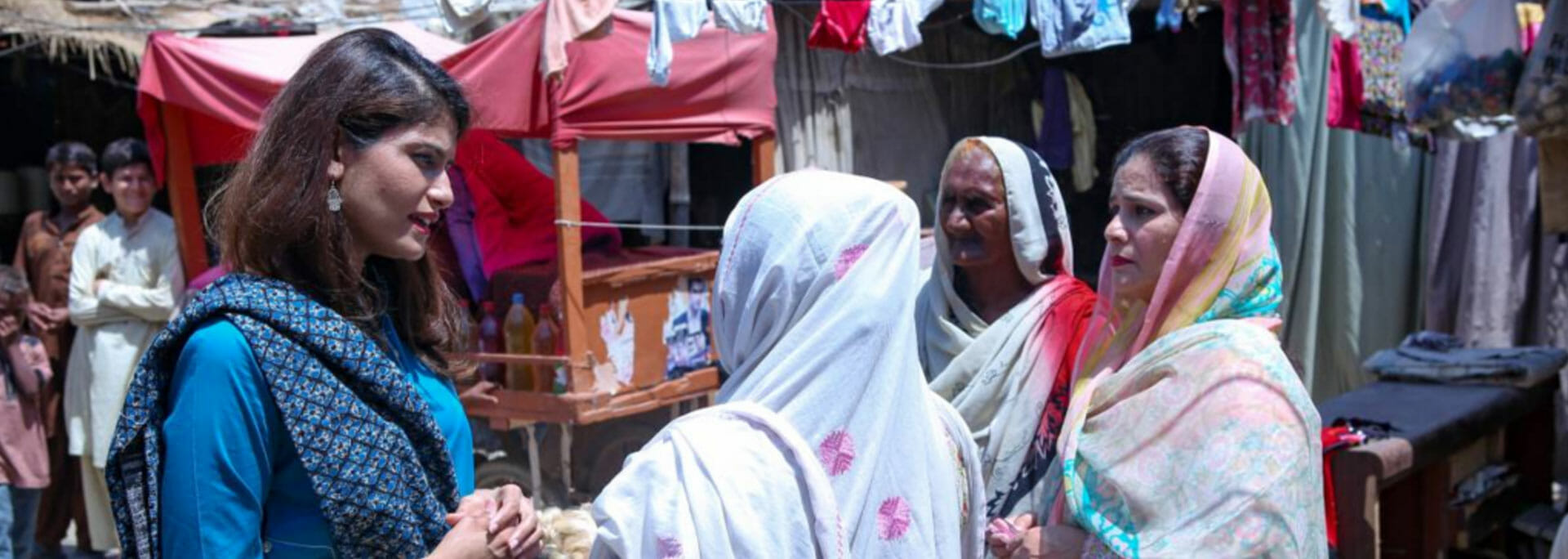
There is something called the doctor bride phenomenon in Pakistan, where parents want their daughters to become doctors and get a medical degree so that they end up getting the best hand in marriage. And that’s where the buck stops. Then, very few people want them to actually work.
Pakistan’s cultural expectations help to create an impressively vast number of women educated in the medical field. Unfortunately, these same expectations play a substantial role in excluding these skill sets from the marketplace, leading to a lack of accessible medical care, an effect pronounced in rural areas.
This occurs when female doctors are encouraged to abandon their medical education after marriage or children, often during their last year in medical school, and is called the Doctor Bride Phenomenon. While most accept this as a way of life, Dr. Sara Saeed saw another way.

How it started: A parent’s dream
While on a video call with Dr. Saeed in Pakistan, I am curious to know how her idea for Sehat Kahani, bridging the gap between medical skills and practice, was initially sparked. Sara promptly brings us back to her childhood to get a better understanding of cultural influences, with undoubtedly the same professionalism she uses to conduct her medical consultations.
“I belong to a traditional middle-class family in Pakistan. When I was growing up, as early as five years old, my parents were telling me I had to become a doctor. Growing up, I was not given a career choice.
When I walked into my medical class for the first time, I walked into an auditorium with 300 students, and realized that 280 were women.”
A wake-up call
“That’s when it hit me, parents want their daughters to become doctors in Pakistan, permitting them to have money put aside to educate them, because a female doctor in Pakistan gets a higher social stature.”
While it felt empowering for Sara to pursue education, she noticed her peers started getting married, having children, and leaving school in the final years of medical college.
A health care gap at a critical point
However, Sara continued her professional aspirations after marriage and graduation, completing an internship and residency in virology at the largest hospital in Karachi.
It was during this time Sara saw many patients whose ailments could have been treated and even cured, if only they had come sooner.
“I wondered, why is it so, that these people are coming, traveling from far away villages, far away cities, to come to Karachi to a main hospital only at a stage where their issues are beyond help?”
I realized that it is because a large majority of the doctor workforce is female, and out of that majority many never work, and even less go into low-income communities and villages. That is why people are not able to see a doctor.
“They only travel to a doctor once an issue becomes so bad and it is no longer manageable.”
Sara’s father had suffered from a health ailment which if caught earlier, would have extended his life and well-being, making this issue personal for Sara.
The making of a doctor bride
Sara became pregnant and made the tough decision to quit her residency, but opted to join a local NGO that was working on starting a clinic in a low income community.
“I didn’t want to just sit at home, so I started working in a clinic in a low-income community in my city. They needed a doctor, so I started doing clinics. Fast forward nine months I had my baby and then I had to shift to a new city with my husband.
While in a new city, with a new house, with a new baby, I had to stay home because I didn’t have an alternative. I couldn’t leave my house. I could not leave my 1-month-old baby, I didn’t have help at that time.
That’s when I realized that I had become a doctor bride,” Sara laughs.
The challenges of personal life while wanting to help others
Like many new mothers, Sara found herself struggling with loneliness after leaving the workforce.
“And somehow that notion was so difficult to bear for me that it pushed me into a postpartum depression… I didn’t have the energy to get up and do things in the house, I just did it because I had to.”
Then, an opportunity presented itself in the form of a problem to be solved. A nurse Sara had been working with called to say she was having trouble finding a doctor.
“So, what should I do? Patients are coming, and they are asking for a doctor, and I am not able to treat them alone.
Now seeing patients (virtually)
Sara heeded the call, working around the limitation by testing practical solutions.
“So, I said, ok, I’ll just start taking patients on call. So that when they come to a clinic they can talk to a doctor. So, we tried it for a couple of weeks, a month. And then she said that this is not enough, that patients come in and they want to see someone. Just talking on call is not helping.
So, she literally taped a small camera on the laptop, and we started doing video consultations.
“And that’s when I realized that wow, this is really working. I can see the patient, and the patient can see me. Now, for me, it was an escape from my usual routine and being able to do what I wanted. For the patient, it was their way to see a doctor.”
Due to the widespread need for doctor services and a focus on preventative care, Sara wondered, could this be something bigger?
I’m going to do it
Sara and her two partners decided to pilot and scale this.
When I got funding, I realized people really think that this idea makes sense because they are paying money for me to pilot it. That’s when I moved back, determined to take six months of my life to pilot this and see how it goes.”
Sara took a pragmatic approach; “If it doesn’t work out, I’ll go back to being a clinician or getting on with my life. But if it works, I’m going to do it.”

It started with one
And the initial idea was that we find clinics in low-income communities where nurses are already treating patients, and we can connect those nurses to online doctors. We give them a laptop and software. A patient comes in and we have them connected to the online doctor.
Sara concludes, “We began with one nurse and one doctor, five years ago now. And that’s how we started.”
And that is how a series of steps, many intentional and many making the most of the situation at hand, led Sara to start Sehat Kahani.
Today Sehat Kahani democratizes access to quality and affordable healthcare, providing care for hundreds of thousands who would otherwise not have access and has reached out to over 360,000 direct beneficiaries through 35 E-Clinics and 3.1 million beneficiaries through its preventive health portfolio, in addition to 160,000 beneficiaries through the E-Health App.
They are also actively involved in COVID-19 screening, treatment, and referral process on a local and national level in collaboration with the government during the COVID-19 crisis.
Dr. Saeed’s business supports the following SDGs:
SDG 3: Good Health and Well-Being
SDG 5: Gender Equality
SDG 8: Decent Work and Economic Growth
SDG 10: Reduced Inequality

